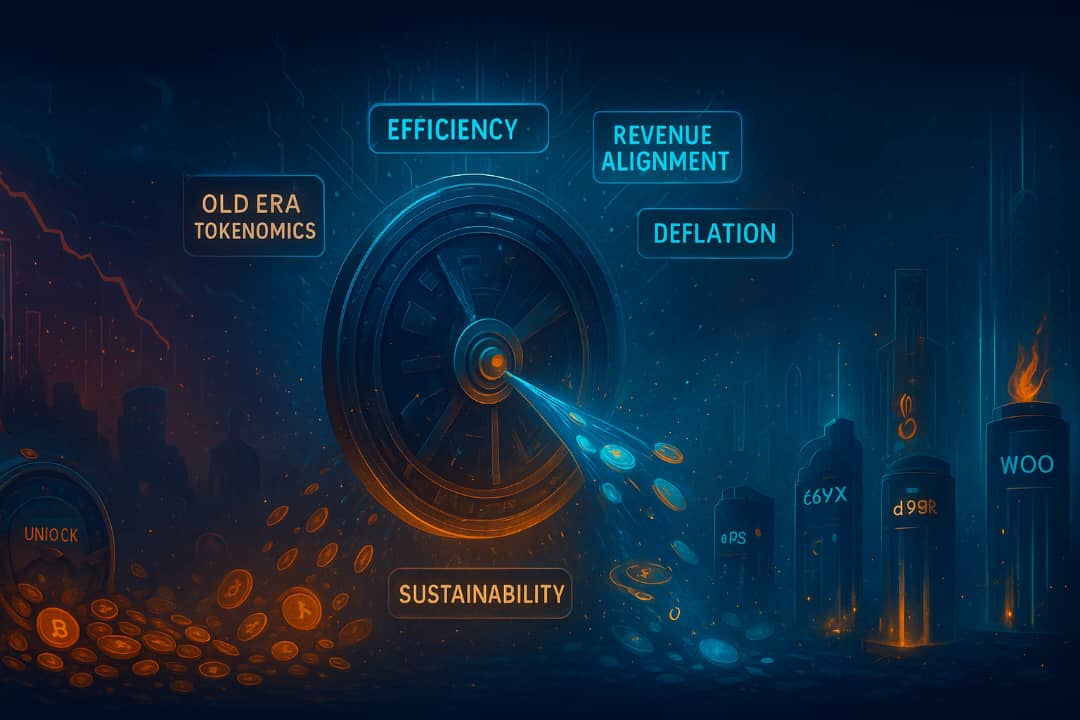
A growing number of crypto protocols are pushing major changes to their tokenomics, leaning heavily into buybacks, reduced emissions, burn mechanisms, and long-term unlock adjustments.
The wave of updates reflects a broader shift in the market as projects focus on sustainability, revenue alignment, and value capture for long-term holders.
The latest upgrades show how teams across DeFi, staking, gaming, and infrastructure are adjusting their economic models to strengthen liquidity, stabilize supply, and build healthier incentive structures. From extended unlock schedules to revenue-linked buybacks, the trend is clear: tokenomics are being redesigned for efficiency, durability, and deflationary pressure.
The overview comes from Tokenomist.ai, which tracked the latest movements across leading protocols.
🔥 Latest Buyback & Tokenomics Upgrades Across Protocols🔥
More projects are shifting toward buybacks, burns, and adjusted emission schedules. Here are the key changes updates across protocols:
🔸 $ASTER pushes several 2025 unlocks to 2026–2035 : Monthly ecosystem unlocks…
— Tokenomist (@Tokenomist_ai) November 22, 2025
ASTER Delays Major Unlocks Into the Next Decade
The most dramatic shift came from ASTER, which pushed multiple 2025 token unlocks all the way out to 2026–2035. The team also paused monthly ecosystem unlocks, citing the lack of a clear usage plan for the tokens.
This move effectively slows ASTER’s circulating supply expansion, easing short-term selling pressure. It also signals a strategic focus on long-term growth rather than rapid distribution.
Unlock delays of this scale are rare in the current market and put ASTER on a more extended distribution curve compared to many competitors.
Lido Introduces Conditional Buybacks for LDO
Liquid staking giant Lido is exploring a structured buyback program for $LDO, but with strict conditions. Buybacks would trigger only if:
- ETH trades above $3,000
- Annualized protocol revenue exceeds $40M
These thresholds are designed to ensure the treasury remains healthy and buybacks occur only in periods of strong performance. The conditional model aims to protect Lido during downturns while still rewarding token holders during revenue surges.
For the largest liquid staking protocol in the market, aligning buybacks with sustainable income represents a long-term balancing act between growth and capital efficiency.
dYdX Community Eyes 75% Revenue Allocation to Buybacks
The governance forum for dYdX is currently debating one of the most aggressive buyback proposals in the ecosystem.
The team is considering allocating 75% of all protocol revenue directly toward buying back $DYDX on the open market.
If approved, this would dramatically amplify deflationary pressure on the token, tying its value closely to the protocol’s trading volume and fees.
Given dYdX’s deep liquidity and consistent market activity, the buyback plan could evolve into one of the strongest revenue-backed models in DeFi.
Huma Finance Preparing December Buybacks
RWA-focused credit protocol Huma Finance confirmed it will begin $HUMA buybacks in December, as part of a broader shift toward supply-tightening mechanisms.
Huma’s model relies on real-world receivables and yield-generating products, meaning revenue accumulation naturally supports a buyback strategy. The move is timed with rising interest in on-chain credit markets and emphasizes a sustainable revenue-to-token loop for the protocol.
Sonic Increases Burn Pressure for the S Token
Sonic announced new plans to raise burn levels for its $S token. While full details are not yet finalized, the objective is clear: reduce circulating supply through consistent, algorithmic burning.
This aligns Sonic with a growing class of chains and protocols using controlled deflation to offset emissions and reward committed stakers.
AEVO Launches Vote on Tokenomics Upgrade
Derivatives protocol AEVO has opened a live community vote on a major tokenomics overhaul. While specifics vary, the upgrade centers on more efficient reward distribution, long-term emission stability, and better alignment between traders, stakers, and governance.
AEVO’s governance participation has been increasing steadily, and the tokenomics vote is shaping up to be one of its most consequential proposals to date.
ORDER Activates Daily Buybacks
ORDER has officially activated daily buybacks, one of the most frequent buyback cycles among active protocols.
Daily purchases remove tokens from circulation at a steady rate, promoting long-term deflation and liquidity support. For smaller-cap ecosystems, this type of predictable buyback rhythm can significantly strengthen market structure.
WOO Network Splits Rewards: Half Burn, Half to Stakers
WOO Network announced an updated staking model that splits rewards cleanly:
- 50% of staking rewards will be used weekly to buy and burn $WOO
- 50% will continue going directly to stakers
This hybrid approach ensures continuous deflation while still offering meaningful yield to users. WOO has long emphasized strong token economics built around utility and liquidity, and this update reinforces that philosophy.
BABY Reduces Annual Inflation From 8% to 5.5%
BABY implemented a major inflation cut, reducing annual issuance from 8% to 5.5%. The reduction removes roughly 250 million tokens per year from the expected supply schedule.
As inflation remains one of the biggest challenges for emerging ecosystems, BABY’s move represents a shift toward long-term sustainability and better holder retention.
Magic Eden Commits 30% of Revenue to Buybacks
NFT marketplace Magic Eden rolled out one of the strongest commitments of all protocols:
- 15% of secondary revenue dedicated to on-chain $ME buybacks
- 15% allocated to buying NFTs directly from the market
This dual-stream model supports both the token and the broader NFT ecosystem, reinforcing Magic Eden’s role as a liquidity engine for digital collectibles.
By tying token value to marketplace performance, Magic Eden is creating a feedback loop that directly supports holders and creators.
A New Phase of Tokenomics Has Begun
From reduced emissions to long-term unlock extensions and revenue-backed buybacks, the market is witnessing a coordinated push across protocols toward stronger, more deflationary token designs.
As competition increases and capital efficiency becomes a priority, tokenomics are rapidly evolving. The shift places greater weight on real revenue, proven product usage, and sustainable distribution schedules, marking a significant evolution from the high-emission models of previous cycles.
If this trajectory continues, 2025–2026 may become one of the most transformative periods for token economic design across the entire industry.
Disclosure: This is not trading or investment advice. Always do your research before buying any cryptocurrency or investing in any services.
Follow us on Twitter @themerklehash to stay updated with the latest Crypto, NFT, AI, Cybersecurity, and Metaverse news!






